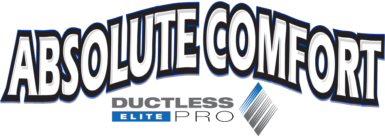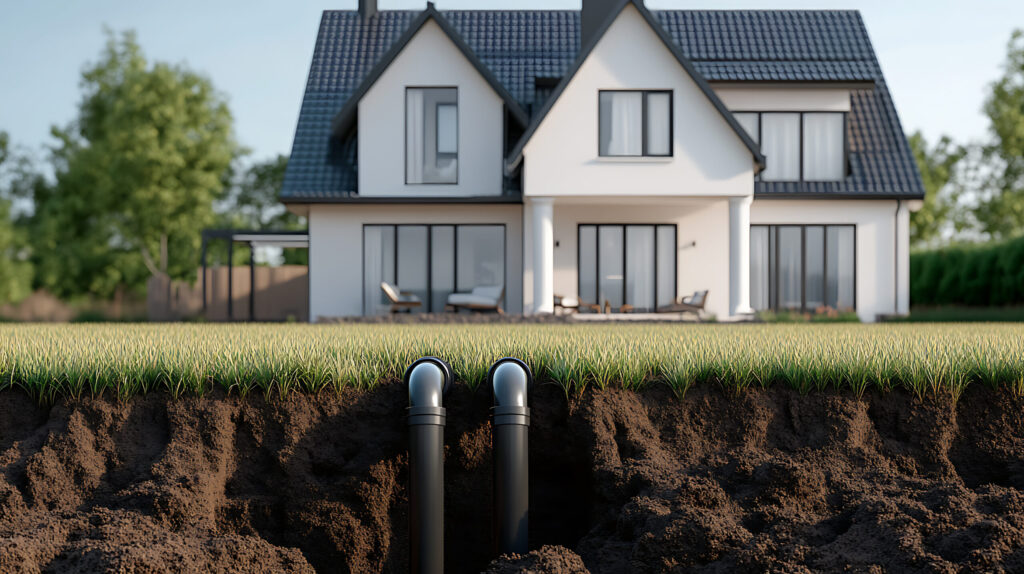Picture this: You’re sitting at your kitchen table, staring at another sky-high energy bill, when you remember your friend mentioning that they cut their heating and cooling costs by 70% with geothermal. It sounds amazing, but then the questions start flooding in. Will they tear up my entire yard? How long will I be without heat? What if something goes wrong?
If you’re a Central Indiana homeowner considering geothermal, you’re probably wrestling with the same concerns that keep many families stuck with expensive, inefficient systems. The truth is, geothermal installation isn’t as difficult or disruptive as most people think—but we understand why it feels overwhelming.
At Absolute Comfort, we’ve guided hundreds of Hoosier families through this exact decision in Greenwood, Franklin, Fishers, and Carmel. As Central Indiana’s leading geothermal experts, we know that when you’re investing $10,000 to $30,000 in your home’s comfort system, every concern matters. Let’s walk through what geothermal installation actually looks like and address the real worries keeping you up at night.
The Reality of Geothermal Installation: Easier Than You Think
Is geothermal installation difficult? The short answer is no—not for you as the homeowner. Here’s what actually happens during a typical installation in Indiana:
Week 1: Outdoor Work (Days 1-3)
Your IGSHPA-certified technicians handle all the outdoor work first. In Indiana’s loamy and sandy soils—which are actually ideal for geothermal systems—we either dig horizontal trenches (if you have 1,500-2,000 square feet of yard space) or drill vertical boreholes for smaller properties.
The key point? You can still live normally in your home during this phase. Your current heating and cooling system keeps running while we work outside.
Week 2: Indoor Installation (Days 4-7)
Next comes the indoor heat pump installation. Since geothermal systems work with your existing ductwork, there’s no major renovation required. We’re essentially swapping out your old system for a more efficient one—not gutting your house.
Final Phase: Testing and Restoration (Days 8-10)
We test everything to ensure peak performance, then restore your landscaping to its original condition. Most homeowners are surprised how quickly their yard bounces back.
The bottom line: While installation takes 1-2 weeks total, the difficulty falls on our experienced team, not you. If you want to see the complete step-by-step process, check out our detailed installation guide.
“But What About My Yard?”
We hear this concern constantly, and it’s completely valid. Your landscaping represents years of work and investment. Here’s the reality:
Horizontal loops do require temporarily disturbing a section of your yard, but our technicians are skilled at minimizing impact. We carefully remove and replace topsoil, reseed disturbed areas, and work around mature trees and established gardens whenever possible.
Vertical loops are perfect for homeowners with prize-winning gardens or limited space. We drill narrow boreholes that require minimal surface disruption—think utility pole installation rather than major excavation.
In Indiana’s consistent 55°F underground temperatures, both options work excellently. The choice comes down to your property layout and preferences. Learn more about how geothermal cooling works specifically in Indiana to understand why our state is perfect for this technology.
“What If My Property Isn’t Right for Geothermal?”
This worry stems from outdated information. Modern geothermal technology works in virtually any Indiana property:
- Small urban lots: Vertical drilling systems
- Rocky soil: Specialized drilling equipment handles Indiana’s varied geology
- Waterfront properties: Pond loop systems that use existing water features
- Any home size: From cozy 1,200 sq ft homes (2-3 tons) to sprawling 3,000+ sq ft properties (4-6 tons)
According to the U.S. Department of Energy, geothermal heat pumps can operate in any climate and work efficiently across all 50 states—and Indiana’s geology is particularly well-suited for these systems.
The only way to know for sure is with a professional assessment. We provide free site evaluations using Manual J heat load calculations to determine exactly what your property needs. No guesswork, no surprises.
The Cost Reality: Less Scary Than You Think
Yes, geothermal requires a larger upfront investment than traditional systems. But here’s what many homeowners don’t realize about the current incentive landscape:
Federal Tax Credit: 30% of total project costs (saving $3,000-$9,000) but only through December 31, 2025, thanks to the One Big Beautiful Bill Act passed in July 2025. Learn more about federal geothermal incentives and how they work.
Indiana Incentives: The Energy Saver Program (launched May 2025) offers rebates up to $8,000 for qualifying households, plus utility rebates like South Central Indiana REMC’s $2,000 credit.
Financing Options: Our partnership with green energy lenders means you can often start saving money from day one, with monthly loan payments that are often lower than your current energy bills.
Long-term Savings: 50-70% lower energy costs mean most systems pay for themselves in 5-10 years, then provide decades of additional savings.
“What About Maintenance and Reliability?”
Here’s where geothermal really shines compared to traditional systems. The underground loops are virtually maintenance-free for 50+ years. The indoor heat pump, protected from weather extremes, typically lasts 25+ years with simple annual tune-ups.
According to the EPA, geothermal heat pumps are “the most energy-efficient, environmentally clean, and cost-effective systems for heating and cooling buildings.”
Common maintenance tasks:
- Annual filter changes (just like any HVAC system)
- Periodic refrigerant level checks
- Routine airflow inspections
That’s it. No more worrying about outdoor units freezing up in winter or breaking down during July heat waves. Geothermal systems run quietly, efficiently, and reliably year-round.
On those rare, brutally cold Indiana days, backup electric elements may briefly activate—but the system is designed for this, and it’s still more efficient than running conventional heating all winter.
Why Indiana Homeowners Love Geothermal
Beyond the technical benefits, here’s what really matters to families who’ve made the switch:
Consistent comfort: No more hot and cold spots, no more humidity issues in summer Quiet operation: Kids can play outside without competing with a noisy air conditioner Peace of mind: Knowing your system will reliably heat and cool for decades Home value boost: 5-10% increase in property value Environmental impact: 80% less energy use means dramatically reduced carbon footprint Health benefits: No combustion means no risk of carbon monoxide or air quality issues
Don’t Wait—The Clock Is Ticking
With the federal tax credit ending December 31, 2025, waiting means potentially losing thousands in savings. Indiana’s skilled geothermal installers are booking up fast as the deadline approaches.
Is geothermal installation difficult? Not when you work with experienced professionals who handle the complex parts while keeping disruption to your daily life minimal.
Ready to Get Started?
Stop letting concerns hold you back from the comfort and savings you deserve. Contact Absolute Comfort today for your free, no-obligation site assessment:
📞 (765) 534-4328
Our licensed, IGSHPA-certified technicians will evaluate your property, explain your options, and show you exactly what installation would look like for your specific situation. No pressure, no surprises—just honest answers to help you make the right decision for your family.
Apply for financing today at: https://apply.svcfin.com/embedded to see how affordable your geothermal system can be, and use ClimateMaster’s Geothermal Savings Calculator to estimate your potential savings.
You can learn learn more about geothermal technology through the U.S. Department of Energy’s comprehensive resources.
Always consult with a tax professional about available incentives, as programs and eligibility can change.
Learn More:
- U.S. Department of Energy Geothermal Resources
- EPA Guide to Geothermal Heat Pumps
- DSIRE Indiana Incentives Database
- ClimateMaster Savings Calculator
- IGSHPA Certified Installer Directory
More from Absolute Comfort:
- How Geothermal Cooling Works in Indiana
- Step-by-Step Geothermal Installation Guide
- Why We’re Indiana’s Geothermal Experts
- American Standard Geothermal Solutions
This guide is part of our comprehensive geothermal series. Absolute Comfort—your trusted partner for HVAC, geothermal, and plumbing services throughout Central Indiana.

